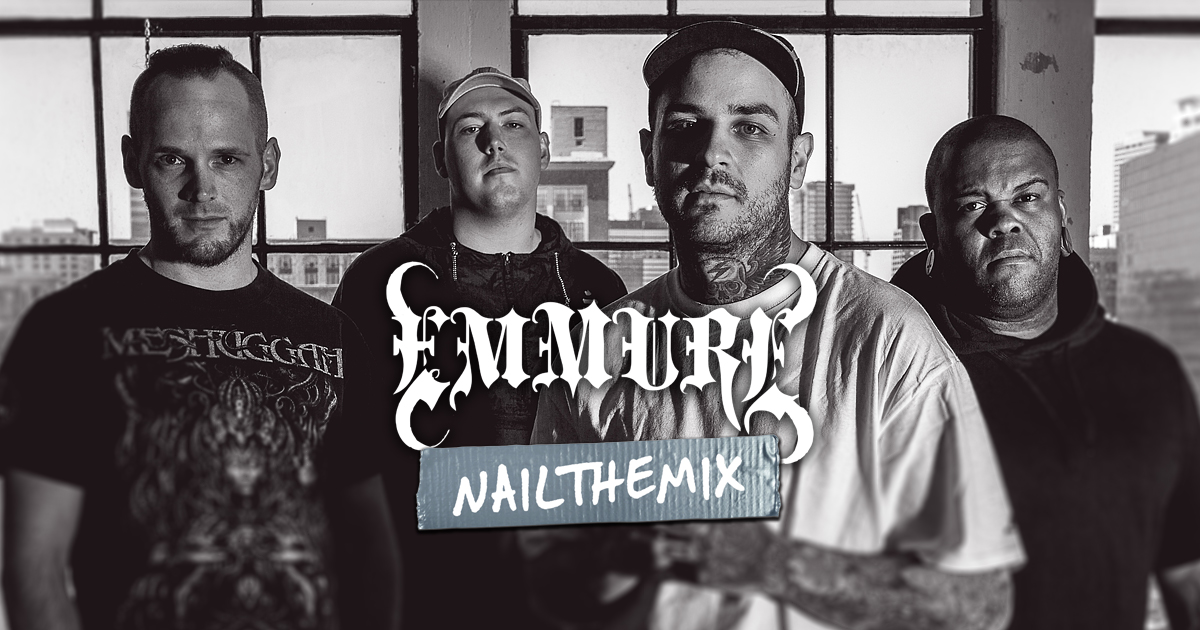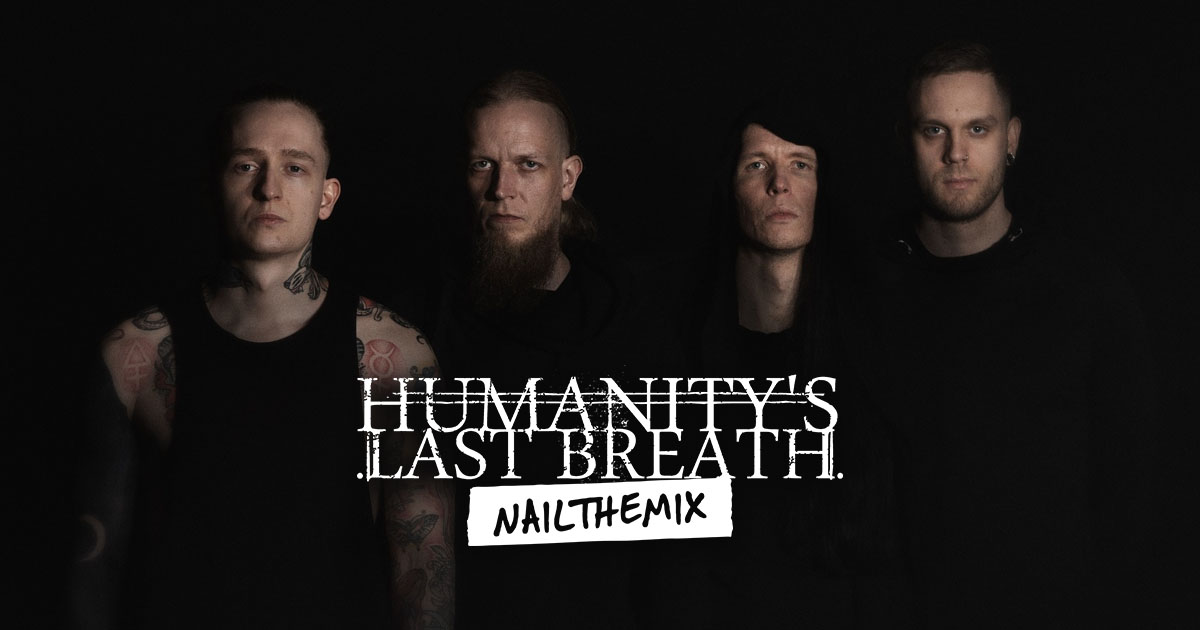
Emmure’s Crushing Mix Bus: WZRD BLD & Jeff Dunne’s Top-Down Method
Nail The Mix Staff
Modern metal mixes, like those for a band as punishingly heavy as Emmure, need to be massive, clear, and impactful. While we often obsess over individual drum samples or guitar tones, sometimes the biggest wins come from the top—your mix bus. The philosophy of “top-down mixing” is a game-changer for many producers, and in a session with WZRD BLD (Drew Fulk) and Jeff Dunne, they broke down the exact bus processing they used to shape the monumental sound of Emmure.
Instead of building a mix from individual faders up, the top-down approach has you start with your main output buses. This forces you to make broader, more musical decisions early on, leading to a faster workflow and a more cohesive final product. Let’s dive into the anabolics they slapped on their master fader.
The “Why” of Top-Down Mixing
Before we get into the plugins, why even work this way? Drew Fulk explained that this routing philosophy was born out of a need for speed and accessibility. By grouping your instruments and processing those groups first, you’re dealing with fewer faders and making bigger-picture decisions from the get-go.
Need to try a vocal sidechain on your whole instrument bus? With a top-down template, it’s already routed and ready to go. You’re not stopping your creative flow to set up eight different things. It keeps you in the zone and focused on how the song feels.
The Final Polish: The “Fake Master” Bus
Drew and Jeff’s chain starts with a bus they call the “Fake Master.” This is the very last processor in the chain before the signal hits your DAW’s main stereo output, which remains completely clean. This bus is for those final touches that sculpt the overall shape and feel of the track.
Brainworx bx_hybrid V2: Width and Mono Control
The first insert here is the Brainworx bx_hybrid V2. This plugin handles two critical jobs. First, it uses the mono-maker feature to collapse everything below 80 Hz to mono. This is a classic trick to ensure a tight, focused, and powerful low-end that translates well on any system.
Second, they use the stereo width knob for creative automation. A big chorus can be made to feel even bigger by automating the width to be slightly wider than the verses. Conversely, an intimate bridge can be pulled in to feel more focused and personal. This dynamic approach adds an incredible amount of emotional impact, making the big moments explode out of the speakers.
FabFilter Pro-L: The Safety Net
Following the Brainworx EQ is a FabFilter Pro-L limiter. Its role here is simple: to act as a safety net. It’s not there to slam the mix for loudness, but rather to gently catch any stray peaks and prevent digital clipping. They keep the input low, only adding a touch of gain. When it’s time to print a version for a mastering engineer, this limiter can be easily dialed back or bypassed.
The Core of the Sound: The Main Two-Bus Chain
This is where the real magic happens. This bus, which feeds into the “Fake Master,” is a perfect marriage of Drew and Jeff’s individual approaches to mix bus processing. It’s a multi-stage chain where each plugin adds its own unique flavor.
UAD Precision Multiband: The Foundation
First up is the UAD Precision Multiband compressor. Described as one of the single best plugins for a mix bus, it serves as the foundational tone-shaper. They don’t use it for drastic frequency repair; instead, they push the input level by about +2dB to get the compressor working just a little. It adds a subtle but powerful character and control across the whole spectrum, making everything feel more polished right away. This is a perfect example of how to apply thoughtful metal compression strategies to glue a mix together.
Slate VBC: The Triple-Threat Compressor
Next in the chain is the Slate Digital Virtual Buss Compressors (VBC) rack, which stacks three distinct compressors for different purposes.
The SSL Comp
The grey, SSL-style compressor is the primary workhorse. It’s set to provide that classic SSL bus compression: punch, glue, and a forward-moving energy that’s been the bedrock of rock and metal records for decades.
The Red Comp
This Focusrite Red-style compressor isn't used for its compression at all. Instead, it’s all about the “Drive” knob. This is a pure saturation move—a classic CLA ripoff trick—to add some harmonic smearing and density to the mix.
The Fairchild (FG-MU)
Last in the VBC is the Fairchild-style unit. This one is blended in very subtly, with the mix knob dialed back. With just a kiss of gain reduction (maybe 0.5dB), it has a unique ability to tighten up the low-midrange in a really pleasant way, adding clarity without making the mix sound thin.
The Pultec Smile: Waves PuigTec EQ
After the compression comes some broad, sweet-sounding tonal shaping from a Pultec-style EQ, in this case, the Waves PuigTec EQP-1A. They use it for the classic “smile curve” EQ: a gentle boost to the sub-bass around 30 Hz for weight and a boost to the high-end air around 16 kHz for shimmer.
They also employ the famous “Pultec trick” on the low end, where you simultaneously boost and attenuate the same frequency. This creates a unique resonant curve that EQs the bass in a way that feels almost compressed and incredibly tight. For more on this kind of surgical shaping, check out these core EQ strategies for metal.
Pro-Tip: They make a point to turn off the “Analog” noise feature on all their Waves plugins to eliminate unnecessary hiss from their signal chain.
Slate Virtual Tape Machines: The Final Glue
The final processor on the main two-bus is the Slate Digital VTM (Virtual Tape Machines). Strapping a tape emulation plugin across your mix bus is a go-to move for in-the-box producers. It adds a touch of saturation, subtle compression, and high-frequency softening that helps glue all the elements together and gives the mix that elusive “sounds like a record” quality.
From Theory to Action
Breaking down a pro mix bus like this is incredibly insightful. You can see how a series of small, intentional moves—mono-ing the low end, using multiple stages of light compression, adding saturation, and broad EQ curves—all combine to create a powerful and polished final product.
Emmure on Nail The Mix
WZRD BLD & Jeff Dunne mixes "Flag Of The Beast"
Get the Session
Learning these concepts is one thing. But what if you could watch pros like WZRD BLD and Jeff Dunne dial in this exact chain on the Emmure multitracks and explain every single decision in real-time? That’s what Nail The Mix is all about. You get to be a fly on the wall for the entire mixing process, from setting up a top-down template to printing the final master. If you’re ready to move beyond presets and see how hit records are really made, it’s time to get inside a real session. You’ll not only get the raw audio files but also see how to unlock your sound with the guidance of the world’s best producers.
Get a new set of multi-tracks every month from a world-class artist, a livestream with the producer who mixed it, 100+ tutorials, our exclusive plugins and more
Get Started for $1




